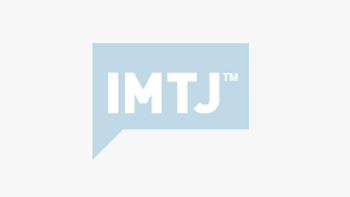Thailand is possibly the largest medical tourism destination by revenue and by numbers, but the latest medical tourism numbers add to the confusion.
Thailand is possibly the largest medical tourism destination by revenue and by numbers, but the latest medical tourism numbers add to the confusion.
Two local bodies publish figures:
• The Ministry of Health works with Kasicom Research Centre. For 2012, the organisation reports 2.53 million medical tourists to Thailand.
• The Tourism Authority of Thailand (TAT) works with the Department of International Trade Promotion. For 2012, this organisation reports 858,000 or 700,000 medical tourists to Thailand.
Both sets of figures are often published and used by others as “medical tourism statistics” but this is incorrect.
In 2010, the Ministry of Health explained that their figures included:
• 70% medical tourists
• 25% resident expatriates
• 5% business travelers and tourists.
A further twist came in 2012 when an official admitted that this was not correct; Somchai Pinyopornpanich said the three main groups of foreigners seeking medical treatment were:
• 26.6% medical tourists
• 41.4% resident expatriates
• 26.65% travellers
In 2013, TAT explained that while one figure was medical tourists, the higher figure came from research that included wellness and spa tourists. Whatever the explanations, the discrepancies are substantial.
Looking at the latest figures from the Ministry of Health and Kasicom Research Centre, the total figures are:
– 2010 1,980,000
– 2011 2,240,000
– 2012 2,530,000
It then goes on to say where they came from. Although often used, as medical tourism numbers both the total and source figures are actually international (non-Thai) patients, whether or not resident in Thailand, so include expatriates, business travellers, holidaymakers and others who are not actually medical tourists. The additional problem with the data is that it records facility visits, not the number of unique patients/customers. So, if one person makes multiple separate visits to the hospital during a stay or generates multiple billing instances on the hospital billing system (e.g. for pharmacy, radiology, physiotherapy etc), they are recorded as multiple patients. So, the figures may be “inflated by five fold or more.
The good news for Thailand is that the figures do show a rising trend.
The latest figures on where patients come from are also confusing. But 2013 figures from the Ministry of Health and Kasicom Research Centre say:
• In 2010, 2011 and 2012 Japan was the biggest source of medical tourists by nationality.
• In 2010 and 2011 the second biggest source was ASEAN countries (Brunei, Cambodia, Indonesia, Laos, Malaysia, Myanmar, Philippines, Singapore, South Korea, and Vietnam)
• By 2012 the USA had overtaken the total of ASEAN countries as number two.
• Figures for 2010, 2011 and 2012 list the third, fourth and fifth biggest source, but as the ten ASEAN countries are counted here as one source, this is misleading and we are really talking about 12th, 13th and 14th places by countries.
• In 2010 and 2011, the next largest group after Japan and ASEAN countries were from the Middle East, USA and UK; and for 2012 this was the same but Middle East renamed as Gulf states and US and UK numbers larger than Gulf totals, with Australia showing as next highest. Gulf/Middle East includes half a dozen countries and Thailand has successfully targeted and attracted medical tourists from these states.
Another problem with these figures is that they use nationality, not residence, so the US and UK numbers may result from the many thousands of expatriates from those countries resident in Thailand or other Asian countries who may be counted wrongly as medical tourists.
Are you confused? Additional information from TAT may clarify or confuse you more.
In mid-2013, TAT carried out a study based on 30,000 interviews and questionnaires for a period of one year between April 2012 and March 2013. The study showed that health and wellness tourism generated 858,340 trips to Thailand and produced estimated earnings of 31.12 billion Baht (USD 997 million) for the Thai economy. The figures include medical tourism within health and wellness, but TAT are unable to say how many are medical tourism and how many are health and wellness tourists, or even if a spa holiday is counted in either.
For 2012 if we go back to TAT medical tourist figures of around 700,000 and Kasicom’s figure of 2.53 million, there is a rather large discrepancy.
TAT figures are medical tourists while Kasicom’s are international patient numbers.
Taking the Ministry of Health’s admission that only 26% are medical tourists, this brings the figures down to around 630,000. On this basis it suggests that the TAT figure of just under 700,000 may make sense; and still keep the country as number one destination; no claims for or by a country of “a million plus medical tourists” has ever been proven, or indeed is likely.
But we are left with making many assumptions on how many of TAT’s health and wellness tourists, and how many of Kasicom’s international patients are medical tourists.
It would be a positive move for the two groups to talk to each other and produce some joint figures that clarify the matter.
If nothing else, the Thailand medical tourism numbers shows us the dangers of relying on “internet fact” where estimates become reality and international patients are miraculously transformed into medical tourists.








 ©2024 All rights reserved LaingBuisson
©2024 All rights reserved LaingBuisson 


